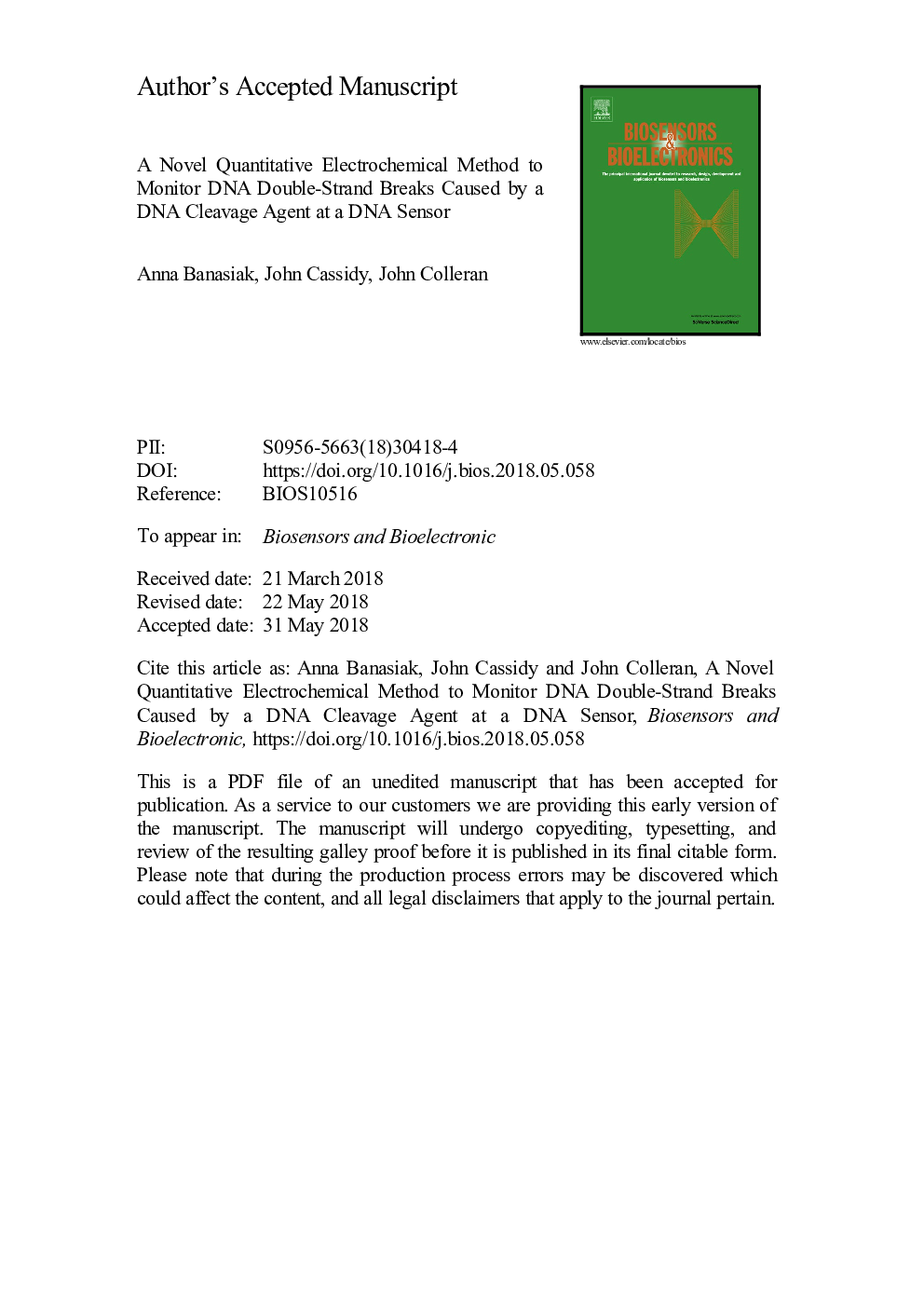| کد مقاله | کد نشریه | سال انتشار | مقاله انگلیسی | نسخه تمام متن |
|---|---|---|---|---|
| 7229016 | 1470915 | 2018 | 16 صفحه PDF | دانلود رایگان |
عنوان انگلیسی مقاله ISI
A novel quantitative electrochemical method to monitor DNA double-strand breaks caused by a DNA cleavage agent at a DNA sensor
دانلود مقاله + سفارش ترجمه
دانلود مقاله ISI انگلیسی
رایگان برای ایرانیان
کلمات کلیدی
موضوعات مرتبط
مهندسی و علوم پایه
شیمی
شیمی آنالیزی یا شیمی تجزیه
پیش نمایش صفحه اول مقاله

چکیده انگلیسی
To date, DNA cleavage, caused by cleavage agents, has been monitored mainly by gel and capillary electrophoresis. However, these techniques are time-consuming, non-quantitative and require gel stains. In this work, a novel, simple and, importantly, a quantitative method for monitoring the DNA nuclease activity of potential anti-cancer drugs, at a DNA electrochemical sensor, is presented. The DNA sensors were prepared using thiol-modified oligonucleotides that self-assembled to create a DNA monolayer at gold electrode surfaces. The quantification of DNA double-strand breaks is based on calculating the DNA surface coverage, before and after exposure to a DNA cleavage agent. The nuclease properties of a model DNA cleavage agent, copper bis-phenanthroline ([CuII(phen)2]2+), that can cleave DNA in a Fenton-type reaction, were quantified electrochemically. The DNA surface coverage decreased on average by 21% after subjecting the DNA sensor to a nuclease assay containing [CuII(phen)2]2+, a reductant and an oxidant. This percentage indicates that 6 base pairs were cleaved in the nuclease assay from the immobilised 30 base pair strands. The DNA cleavage can be also induced electrochemically in the absence of a chemical reductant. [CuII(phen)2]2+ intercalates between DNA base pairs and, on application of a suitable potential, can be reduced to [CuI(phen)2]+, with dissolved oxygen acting as the required oxidant. This reduction process is facilitated through DNA strands via long-range electron transfer, resulting in DNA cleavage of 23%. The control measurements for both chemically and electrochemically induced cleavage revealed that DNA strand breaks did not occur under experimental conditions in the absence of [CuII(phen)2]2+.
ناشر
Database: Elsevier - ScienceDirect (ساینس دایرکت)
Journal: Biosensors and Bioelectronics - Volume 117, 15 October 2018, Pages 217-223
Journal: Biosensors and Bioelectronics - Volume 117, 15 October 2018, Pages 217-223
نویسندگان
Anna Banasiak, John Cassidy, John Colleran,